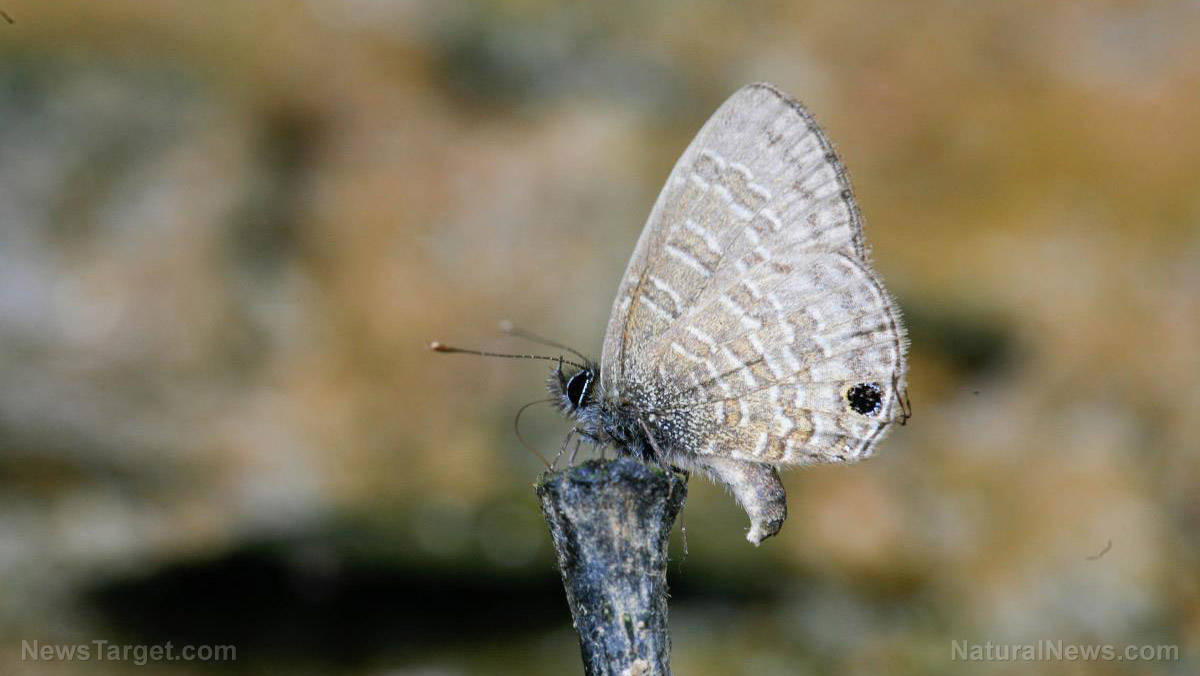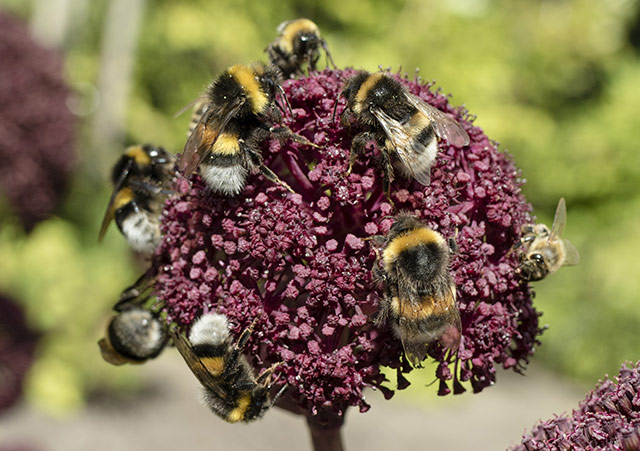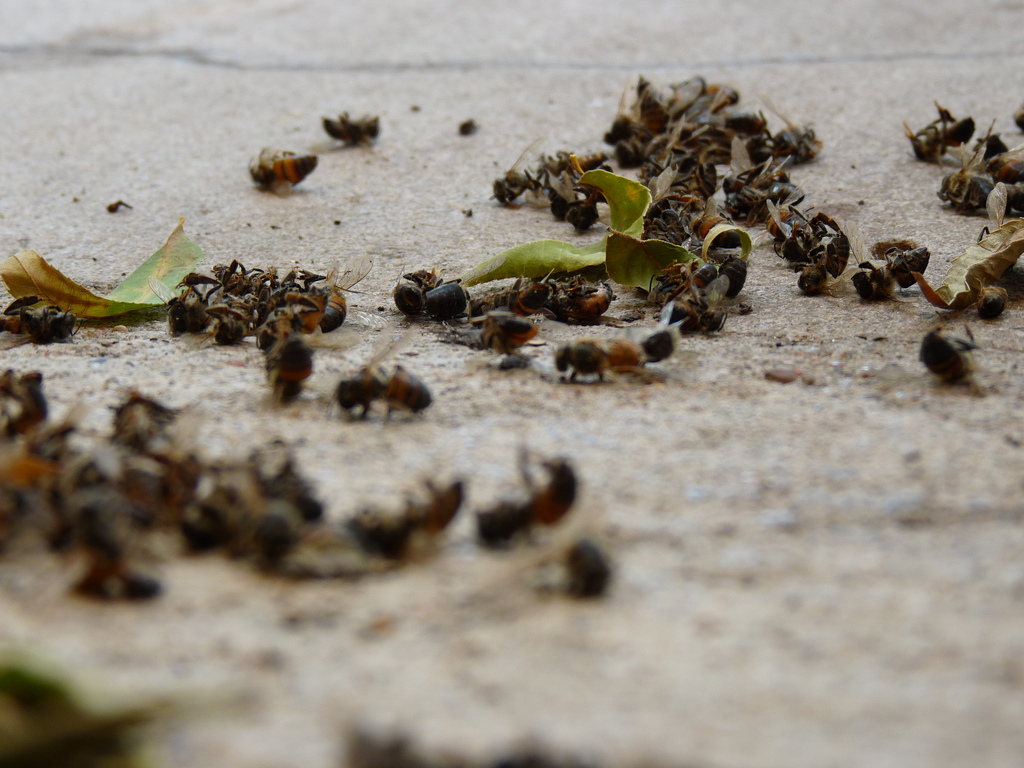
But according to a study conducted by researchers from the University of Sussex, moths are more efficient night pollinators compared to other day-flying pollinators like bees.
The study was published in the journal PLOS ONE.
The scientists gathered data from 10 sites in the South East of England throughout July 2021. After analyzing the data, the research team discovered that 83 percent of insect visits to bramble flowers were made during the day.
Moth is a nocturnal pollinator
Data also revealed that moths made fewer visits during the shorter summer nights, making up only 15 percent of the visits. However, moths were able to pollinate the flowers more quickly. (Related: Bee aware: About 75% of the world’s food crops rely on bees and other pollinators.)
The scientists explained that this means moths are more efficient pollinators than day-flying insects like bees.
While day-flying insects have more time available to transfer pollen, moths are making an important contribution during the night.
Fiona Mathews, co-author of the study and professor of Environmental Biology at the University of Sussex, said while bees are important, "moths pollinate flowers at a faster rate than day-flying insects."
Unfortunately, many moths are in serious decline in Britain. The decline affects pollination and food supplies for other species like bats and birds.
The findings also revealed that taking simple yet effective steps, like allowing patches of bramble to flower, can provide important food sources for moths. In turn, moths help pollinate plants that produce a crop of blackberries.
During the course of the study, scientists took a closer look at the contribution of both nocturnal and non-nocturnal insects to the pollination of bramble.
The research team used camera traps to record the number of insects visiting flowers. To figure out how quickly pollen was deposited at different times of the day, they prevented insects from visiting some flowers but not others.
The study also helped show how bramble, a shrub often considered unfavorable and is usually cleared away, was also important for nocturnal pollinators like moths.
Dr. Max Anderson, a Ph.D. student at the University of Sussex working with Mathews while the study was ongoing and the South West Landscape Officer at the Butterfly Conservation, added that even though moths are "greatly under-appreciated and under-studied," they are important pollinators.
The majority of pollination research tends to focus on bees and other day-flying insects, with little to no data on what happens at night.
Thanks to the study, experts now know that moths are also important pollinators. Anderson also warned that action must be taken to support moths.
He added that this can be done by encouraging some bramble and other flowering scrub plants to grow in parks, gardens, hedges and road verges.
Why are pollinators important?
Pollinating insects are an important part of many ecological communities. Pollinators are also crucial to the natural ecosystem.
Bees, moths and other pollinators help plants to fruit, set seed and breed. This then provides food and habitat for many creatures.
This means that the health of ecosystems is fundamentally linked to bees and other pollinators. But due to factors like intensive agriculture, there is a widespread decline in wild pollinators.
The study also shows that both night-flying and day-flying pollinators must be protected to allow natural ecosystems to flourish.
The research team that conducted the study is urging the public to protect moths by "planting white flowers, growing patches of scrub and rough grass and turning off night lights."
Other nocturnal pollinators
These nocturnal pollinators work alongside moths to spread pollen and help plants thrive.
Bats
While some people associate bats with vampires and dark caves, they are also beneficial to the environment.
According to the U.S. Forest Service (USFS), two species of nectar-feeding bats – the long-nosed bat and the Mexican long-tongued bat – migrate more than 1,000 miles every spring from Mexico to pollinate plants all the way in Arizona, New Mexico and Texas.
Sadly, both are currently listed as federally endangered species. This doesn't bode well for farming, especially since many crops rely on bats for nocturnal pollination.
For example, crops like agave, cocoa, eucalyptus, guava and mango can flourish because of bats.
Additionally, bats can fly longer than insects so they can distribute pollen to more places. Most bat species feed on insects and plant pollen, but even rare vampire bats that feed on mammals can pollinate.
Fireflies
In North America, there are 165 different species of fireflies, which are actually beetles, not flies.
The life cycle of fireflies is longer than that of typical insects and they spend several months to a year underground before they're adults and ready to mate.
Adult fireflies light up humid summer evenings and feed on pollen and plant nectar.
Lizards
Some reptiles are pollinators. Researchers are still studying nighttime pollination and they make new discoveries in real-time.
To illustrate, a research team recently discovered a rare flower in South Africa that is exclusively pollinated by lizards.
Meanwhile, in Mauritius, geckos have a major role in pollinating flowering trees.
Mice
Surprisingly, mice and other rodents have been seen pollinating ground flowers by feeding on nectar. Pollination provides animals like mice with the food they need to survive. At the same time, the process keeps ecosystems healthy and thriving.
Visit Ecology.news to read more articles about moths, bees and other pollinators.
Watch the video below to learn how a researcher fortifies honeybee colonies.
This video is from the Finding Genius Podcast channel on Brighteon.com.
More related stories:
EPA denies petition to regulate pesticide-coated seeds that harm pollinators.
Study: Pesticides are highly damaging to beneficial insects like bees.
Newly discovered pathogen variant may wipe out already threatened bee populations worldwide.
Sources include:
Please contact us for more information.























